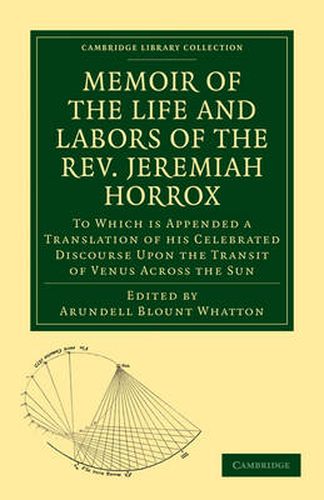Readings Newsletter
Become a Readings Member to make your shopping experience even easier.
Sign in or sign up for free!
You’re not far away from qualifying for FREE standard shipping within Australia
You’ve qualified for FREE standard shipping within Australia
The cart is loading…






Jeremiah Horrox (1618-1641) was one of the most interesting astronomers Britain has ever produced, and his tragically early death deprived the field of one of its most brilliant talents. In his short life he achieved much, having mastered the current state of astronomy at Cambridge University and going on to make important new calculations about the diameter and position of known planets, moons and stars. In the 1660s and 70s several prominent scientists, including Huygens, Newton and Flamsteed, took an interest in Horrox’s discoveries and published his surviving treatises. This memoir of 1859 was part of a Victorian revival of interest in Horrox. It includes translation of his major work, Venus in Sole Visa, a draft of a treatise on the transit of Venus, in which he describes the conjunction of Venus with the sun, which he correctly calculated and observed in 1639.
$9.00 standard shipping within Australia
FREE standard shipping within Australia for orders over $100.00
Express & International shipping calculated at checkout
Jeremiah Horrox (1618-1641) was one of the most interesting astronomers Britain has ever produced, and his tragically early death deprived the field of one of its most brilliant talents. In his short life he achieved much, having mastered the current state of astronomy at Cambridge University and going on to make important new calculations about the diameter and position of known planets, moons and stars. In the 1660s and 70s several prominent scientists, including Huygens, Newton and Flamsteed, took an interest in Horrox’s discoveries and published his surviving treatises. This memoir of 1859 was part of a Victorian revival of interest in Horrox. It includes translation of his major work, Venus in Sole Visa, a draft of a treatise on the transit of Venus, in which he describes the conjunction of Venus with the sun, which he correctly calculated and observed in 1639.